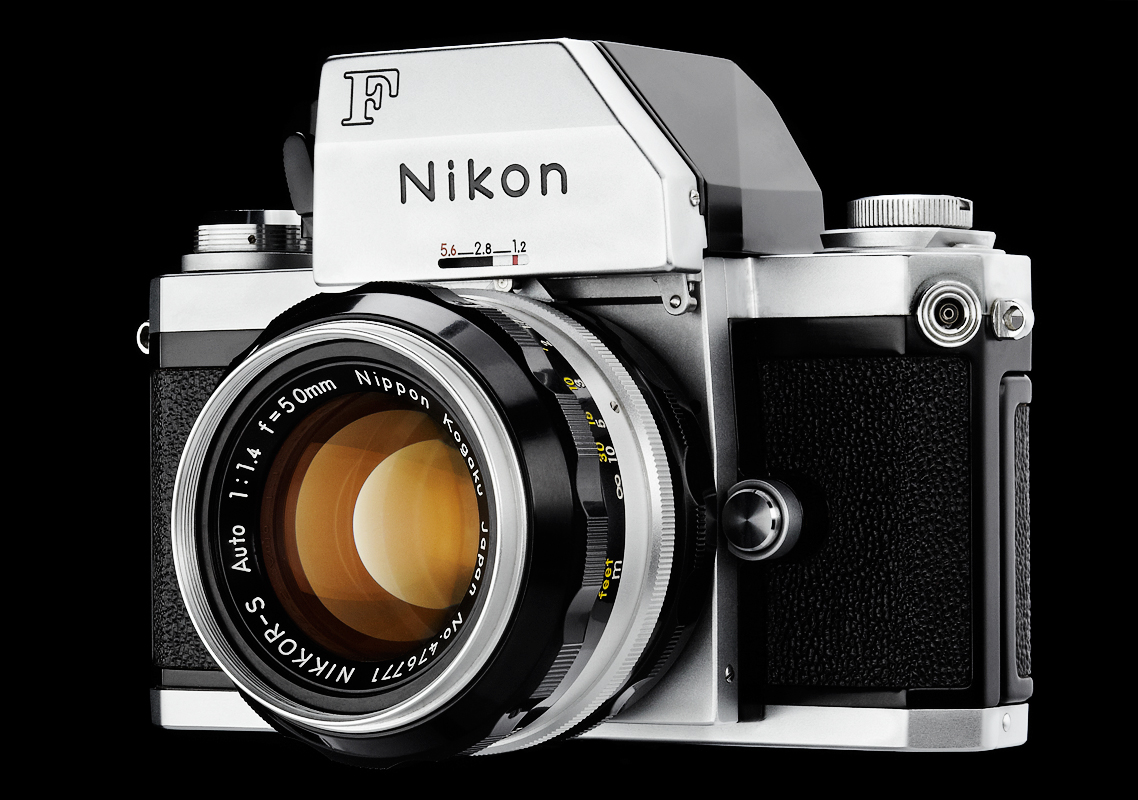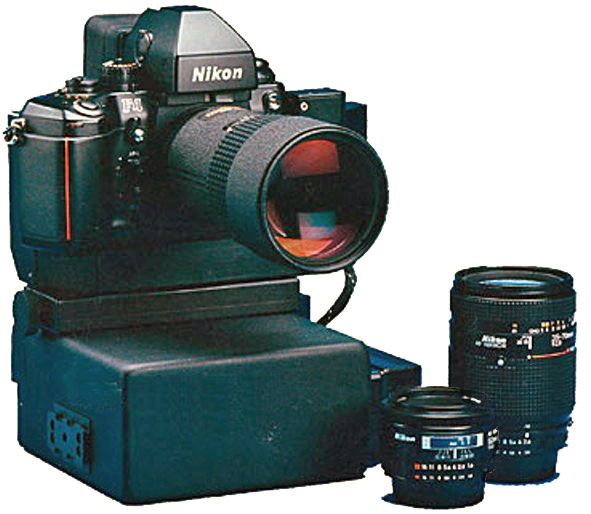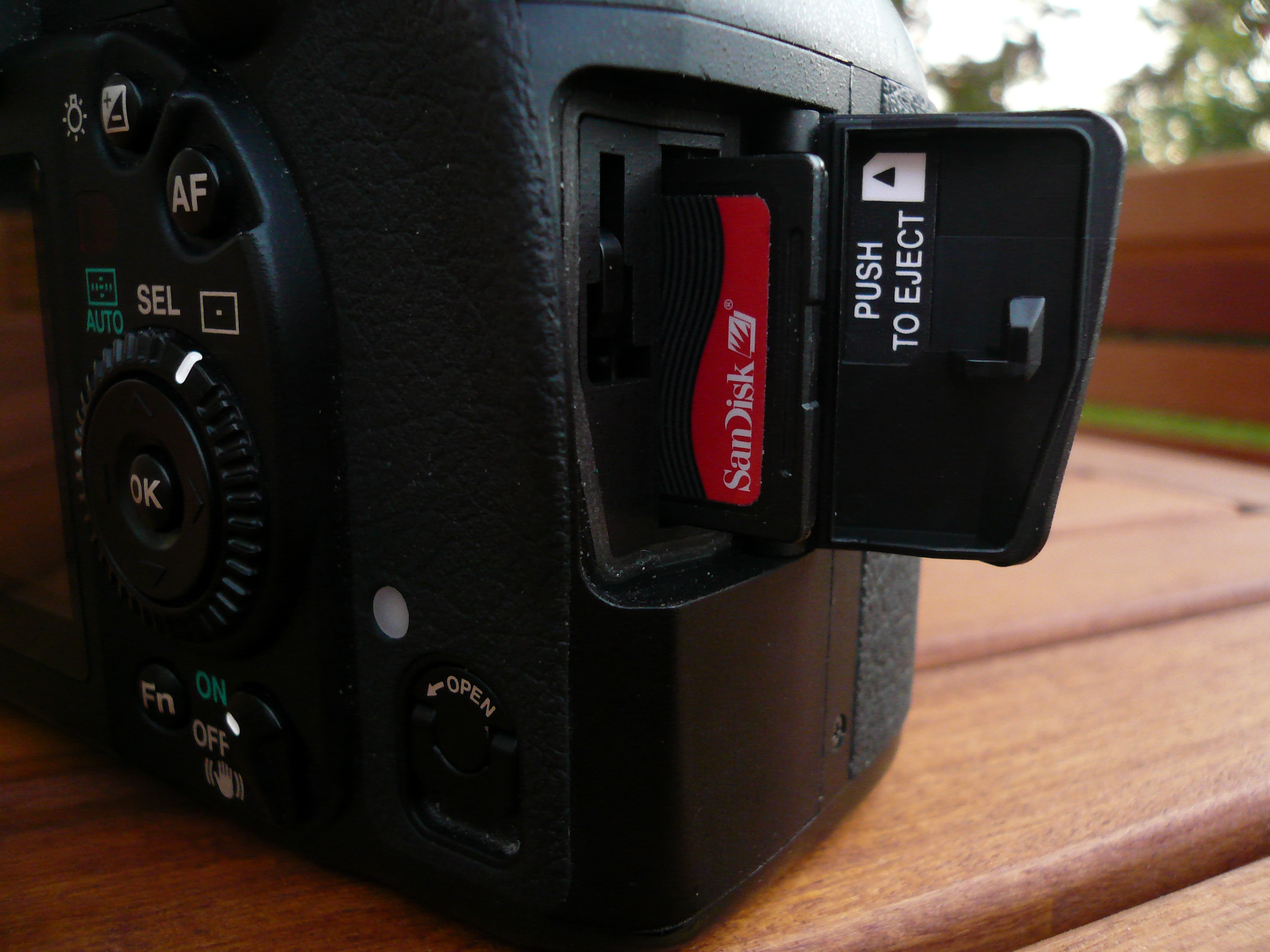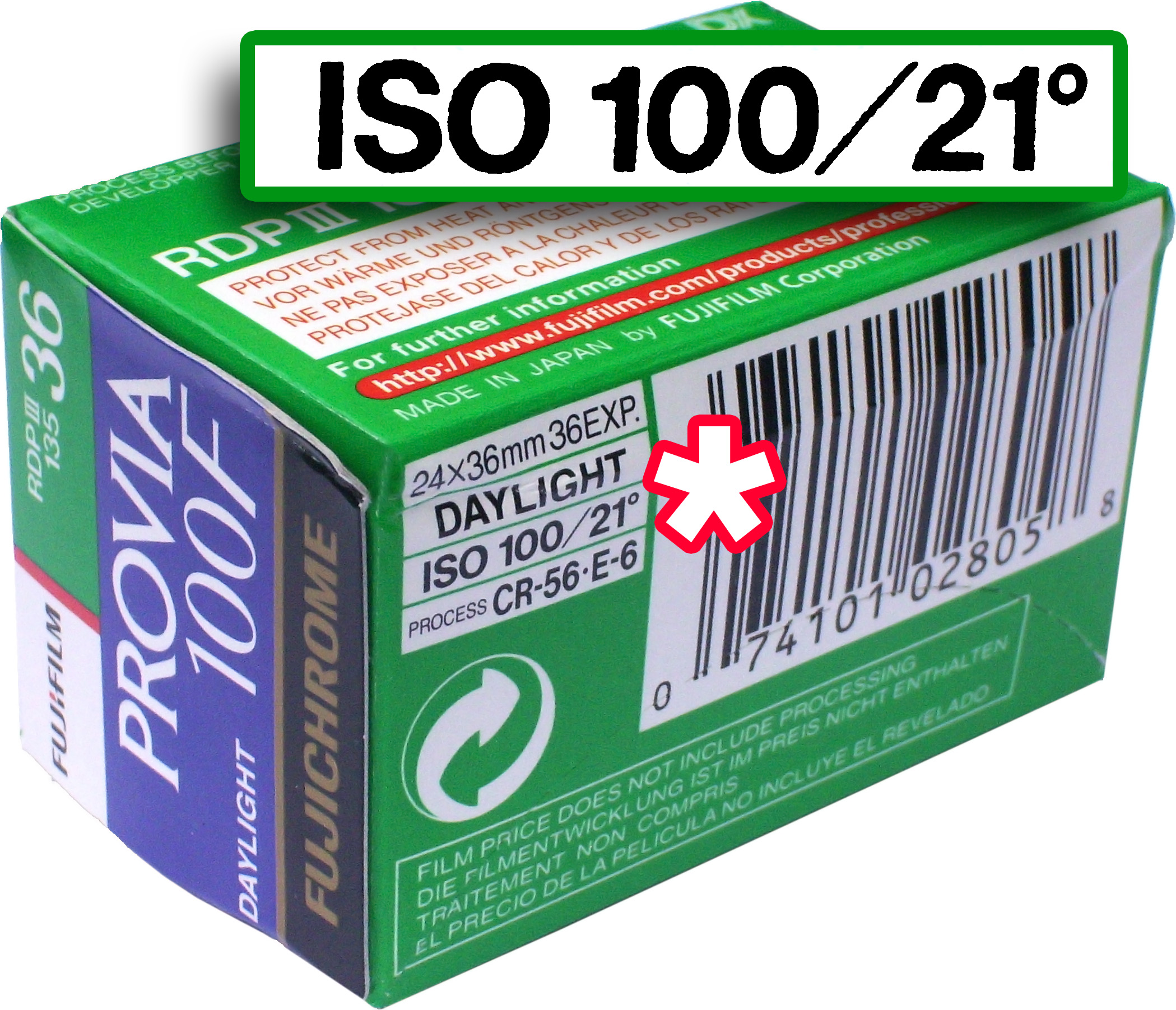|
Nikon D7500
The Nikon D7500 is a 20.9-megapixel digital single-lens reflex camera using an APS-C sensor. It was announced by Nikon Corporation on 12 April 2017, and started shipping on 2 June 2017. It is the successor to the Nikon D7200 as Nikon's DX format midrange DSLR. Features The D7500 borrows the sensor and processor from the Nikon D500, whereas other features previously available in the D7200 or D500 have been omitted (single SD card slot instead of two, and no Nikon battery grip). The D7500 is the first D7XXX series without metering support for old manual focus Nikon AI type (Non-CPU) lenses. * Nikon DX format 20.9 megapixel CMOS sensor * 4K UHD video in 30p, 25p, and 24p * 1.5x field of view crop * Viewfinder with 100% frame coverage and 0.94x magnification * Nikon EXPEED5 image processor * Monocoque design with composite carbon fiber with weather sealing against moisture and dust. * Nikon F-mount lenses * Active D-Lighting (three levels) * 180K pixel RGB metering system. * Retou ... [...More Info...] [...Related Items...] OR: [Wikipedia] [Google] [Baidu] |
Nikon
(, ; ), also known just as Nikon, is a Japanese multinational corporation headquartered in Tokyo, Japan, specializing in optics and imaging products. The companies held by Nikon form the Nikon Group. Nikon's products include cameras, camera lenses, binoculars, microscopes, ophthalmic lenses, measurement instruments, rifle scopes, spotting scopes, and the steppers used in the photolithography steps of semiconductor fabrication, of which it is the world's second largest manufacturer. The company is the eighth-largest chip equipment maker as reported in 2017. Also, it has diversified into new areas like 3D printing and regenerative medicine to compensate for the shrinking digital camera market. Among Nikon's many notable product lines are Nikkor imaging lenses (for F-mount cameras, large format photography, photographic enlargers, and other applications), the Nikon F-series of 35 mm film SLR cameras, the Nikon D-series of digital SLR cameras, the Nikon Z-series of digital mi ... [...More Info...] [...Related Items...] OR: [Wikipedia] [Google] [Baidu] |
Image Processor
An image processor, also known as an image processing engine, image processing unit (IPU), or image signal processor (ISP), is a type of media processor or specialized digital signal processor (DSP) used for image processing, in digital cameras or other devices. Image processors often employ parallel computing even with SIMD or MIMD technologies to increase speed and efficiency. The digital image processing engine can perform a range of tasks. To increase the system integration on embedded devices, often it is a system on a chip with multi-core processor architecture. Function Bayer transformation The photodiodes employed in an image sensor are color-blind by nature: they can only record shades of grey. To get color into the picture, they are covered with different color filters: red, green and blue (RGB) according to the pattern designated by the Bayer filter - named after its inventor. As each photodiode records the color information for exactly one pixel of the image, withou ... [...More Info...] [...Related Items...] OR: [Wikipedia] [Google] [Baidu] |
Nikon F-mount Cameras
(, ; ), also known just as Nikon, is a Japanese multinational corporation headquartered in Tokyo, Japan, specializing in optics and imaging products. The companies held by Nikon form the Nikon Group. Nikon's products include cameras, camera lenses, binoculars, microscopes, ophthalmic lenses, measurement instruments, rifle scopes, spotting scopes, and the steppers used in the photolithography steps of semiconductor fabrication, of which it is the world's second largest manufacturer. The company is the eighth-largest chip equipment maker as reported in 2017. Also, it has diversified into new areas like 3D printing and regenerative medicine to compensate for the shrinking digital camera market. Among Nikon's many notable product lines are Nikkor imaging lenses (for F-mount cameras, large format photography, photographic enlargers, and other applications), the Nikon F-series of 35 mm film SLR cameras, the Nikon D-series of digital SLR cameras, the Nikon Z-series of digital mirro ... [...More Info...] [...Related Items...] OR: [Wikipedia] [Google] [Baidu] |
Nikon DSLR Cameras
(, ; ), also known just as Nikon, is a Japanese multinational corporation headquartered in Tokyo, Japan, specializing in optics Optics is the branch of physics that studies the behaviour and properties of light, including its interactions with matter and the construction of instruments that use or detect it. Optics usually describes the behaviour of visible, ultrav ... and Photography, imaging products. The companies held by Nikon form the Nikon Group. Nikon's products include cameras, camera lenses, binoculars, microscopes, ophthalmic lenses, measurement instruments, rifle scopes, spotting scopes, and the steppers used in the photolithography steps of Semiconductor device fabrication, semiconductor fabrication, of which it is the world's second largest manufacturer. The company is the eighth-largest chip equipment maker as reported in 2017. Also, it has diversified into new areas like 3D printers, 3D printing and regenerative medicine to compensate for the shrinking ... [...More Info...] [...Related Items...] OR: [Wikipedia] [Google] [Baidu] |
Wi-Fi
Wi-Fi () is a family of wireless network protocols, based on the IEEE 802.11 family of standards, which are commonly used for local area networking of devices and Internet access, allowing nearby digital devices to exchange data by radio waves. These are the most widely used computer networks in the world, used globally in home and small office networks to link desktop and laptop computers, tablet computers, smartphones, smart TVs, printers, and smart speakers together and to a wireless router to connect them to the Internet, and in wireless access points in public places like coffee shops, hotels, libraries and airports to provide visitors with Internet access for their mobile devices. ''Wi-Fi'' is a trademark of the non-profit Wi-Fi Alliance, which restricts the use of the term ''Wi-Fi Certified'' to products that successfully complete interoperability certification testing. the Wi-Fi Alliance consisted of more than 800 companies from around the world. over 3.05 billion ... [...More Info...] [...Related Items...] OR: [Wikipedia] [Google] [Baidu] |
Memory Card
A memory card is an electronic data storage device used for storing digital information, typically using flash memory. These are commonly used in digital portable electronic devices. They allow adding memory to such devices using a card in a socket instead of a protruding USB flash drives. History The basis for memory card technology is flash memory. It was invented by Fujio Masuoka at Toshiba in 1980 and commercialized by Toshiba in 1987. PC Cards (PCMCIA) were the first commercial memory card formats (type I cards) to come out, but are now mainly used in industrial applications and to connect I/O devices such as modems. In 1992, SanDisk introduced FlashDisk, a PCMCIA card and one of the first memory cards that did not require battery power to retain its contents. Since 1994, a number of memory card formats smaller than the PC Card arrived. The first one was CompactFlash and later SmartMedia and Miniature Card. The desire for smaller cards for cell-phones, PDAs, and co ... [...More Info...] [...Related Items...] OR: [Wikipedia] [Google] [Baidu] |
Raw Image Format
A camera raw image file contains unprocessed or minimally processed data from the image sensor of either a digital camera, a motion picture film scanner, or other image scanner. Raw files are named so because they are not yet processed and therefore are not ready to be Photographic printing, printed, viewed or edited with a bitmap graphics editor. Normally, the image is processed by a raw converter in a wide-gamut internal color space where precise adjustments can be made before file format conversion, conversion to a viewable file format such as JPEG or PNG for storage, printing, or further manipulation. There are dozens of raw formats in use by different manufacturers of digital image capture equipment. Rationale Raw image files are sometimes incorrectly described as "digital Negative (photography), negatives", but neither are they negatives nor do the unprocessed files constitute visible images. Rather, the Raw datasets are more like Exposure (photography), exposed but Lat ... [...More Info...] [...Related Items...] OR: [Wikipedia] [Google] [Baidu] |
Tagged Image File Format
Tag Image File Format, abbreviated TIFF or TIF, is an image file format for storing raster graphics images, popular among graphic artists, the publishing industry, and photographers. TIFF is widely supported by scanning, faxing, word processing, optical character recognition, image manipulation, desktop publishing, and page-layout applications. The format was created by the Aldus Corporation for use in desktop publishing. It published the latest version 6.0 in 1992, subsequently updated with an Adobe Systems copyright after the latter acquired Aldus in 1994. Several Aldus or Adobe technical notes have been published with minor extensions to the format, and several specifications have been based on TIFF 6.0, including TIFF/EP (ISO 12234-2), TIFF/IT (ISO 12639), TIFF-F (RFC 2306) and TIFF-FX (RFC 3949). History TIFF was created as an attempt to get desktop scanner vendors of the mid-1980s to agree on a common scanned image file format, in place of a multitude of proprietary for ... [...More Info...] [...Related Items...] OR: [Wikipedia] [Google] [Baidu] |
JPEG
JPEG ( ) is a commonly used method of lossy compression for digital images, particularly for those images produced by digital photography. The degree of compression can be adjusted, allowing a selectable tradeoff between storage size and image quality. JPEG typically achieves 10:1 compression with little perceptible loss in image quality. Since its introduction in 1992, JPEG has been the most widely used image compression standard in the world, and the most widely used digital image format, with several billion JPEG images produced every day as of 2015. The term "JPEG" is an acronym for the Joint Photographic Experts Group, which created the standard in 1992. JPEG was largely responsible for the proliferation of digital images and digital photos across the Internet, and later social media. JPEG compression is used in a number of image file formats. JPEG/Exif is the most common image format used by digital cameras and other photographic image capture devices; along with JPEG ... [...More Info...] [...Related Items...] OR: [Wikipedia] [Google] [Baidu] |
Film Speed
Film speed is the measure of a photographic film's sensitivity to light, determined by sensitometry and measured on various numerical scales, the most recent being the ISO system. A closely related ISO system is used to describe the relationship between exposure and output image lightness in digital cameras. Relatively insensitive film, with a correspondingly lower speed index, requires more exposure to light to produce the same image density as a more sensitive film, and is thus commonly termed a ''slow film''. Highly sensitive films are correspondingly termed ''fast films''. In both digital and film photography, the reduction of exposure corresponding to use of higher sensitivities generally leads to reduced image quality (via coarser film grain or higher image noise of other types). In short, the higher the sensitivity, the grainier the image will be. Ultimately sensitivity is limited by the quantum efficiency of the film or sensor. Film speed measurement systems His ... [...More Info...] [...Related Items...] OR: [Wikipedia] [Google] [Baidu] |
Ultrasound
Ultrasound is sound waves with frequency, frequencies higher than the upper audible limit of human hearing range, hearing. Ultrasound is not different from "normal" (audible) sound in its physical properties, except that humans cannot hear it. This limit varies from person to person and is approximately 20 Hertz, kilohertz (20,000 hertz) in healthy young adults. Ultrasound devices operate with frequencies from 20 kHz up to several gigahertz. Ultrasound is used in many different fields. Ultrasonic devices are used to detect objects and measure distances. Ultrasound imaging or sonography is often used in medicine. In the nondestructive testing of products and structures, ultrasound is used to detect invisible flaws. Industrially, ultrasound is used for cleaning, mixing, and accelerating chemical processes. Animals such as bats and porpoises use ultrasound for locating Predation, prey and obstacles. History Acoustics, the science of sound, starts as far back as Pyth ... [...More Info...] [...Related Items...] OR: [Wikipedia] [Google] [Baidu] |
Autofocus
An autofocus (or AF) optical system uses a sensor, a control system and a motor to focus on an automatically or manually selected point or area. An electronic rangefinder has a display instead of the motor; the adjustment of the optical system has to be done manually until indication. Autofocus methods are distinguished as active, passive or hybrid types. Autofocus systems rely on one or more sensors to determine correct focus. Some AF systems rely on a single sensor, while others use an array of sensors. Most modern SLR cameras use through-the-lens optical sensors, with a separate sensor array providing light metering, although the latter can be programmed to prioritize its metering to the same area as one or more of the AF sensors. Through-the-lens optical autofocusing is usually speedier and more precise than manual focus with an ordinary viewfinder, although more precise manual focus can be achieved with special accessories such as focusing magnifiers. Autofocus accuracy ... [...More Info...] [...Related Items...] OR: [Wikipedia] [Google] [Baidu] |









